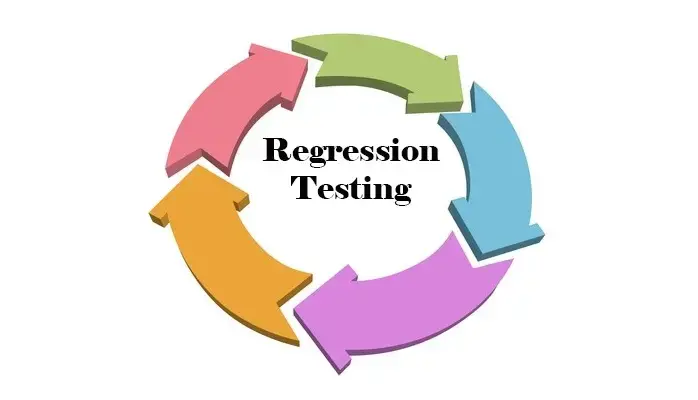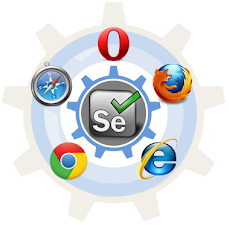Mastering Regression Testing: Best Practices, Tools, and Techniques
1. Introduction
- What is regression testing?
- Why is regression testing important?
- Types of regression testing
3. Test Planning
- Define the scope and objectives of regression testing
- Identify the regression test suite
- Determine the regression testing schedule
- Assign responsibilities
4. Test Case Design
- Identify test cases for regression testing
- Prioritize test cases based on risk and impact
- Document test cases
5. Test Execution
- Setup test environment
- Execute regression tests
- Record and analyze test results
- Report defects
6. Test Maintenance
- Update regression test suite
- Remove obsolete test cases
- Re-prioritize test cases based on changing requirements
7. Automation
- Advantages of automation
- Selecting the right automation tool
- Developing and maintaining automated test scripts
8. Tools for Regression Testing
- Use of version control
- Collaboration among team members
- Test data management
- Defect management
10. Conclusion
- Summary of regression testing
- Future trends in regression testing
1. Introduction
1.1. What is Regression Testing?
Regression testing is a software testing technique that is used to ensure that modifications or changes made to an application or software system do not have any negative impact on its existing features, functionalities, or performance. It involves rerunning a previously conducted test on the modified or updated software to validate whether any changes have caused new bugs, errors, or unexpected behavior in the software.Regression testing is essential to ensure that the software continues to function correctly after any updates or changes, as it helps to maintain the quality and reliability of the software system.
1.2. Why is Regression Testing Important?
Regression testing is critical in software development because it ensures that changes made to the software system do not break any previously working features or functionalities. Without regression testing, any changes made to the software could cause unforeseen issues, which could result in significant setbacks for the development team, including delayed project timelines and increased development costs.By performing regression testing, developers can ensure that the software is still functioning correctly after any changes, and they can identify and fix any issues quickly and efficiently. This helps to ensure that the software is delivered on time and meets the requirements and expectations of its users.
1.3. Types of Regression Testing
There are three types of regression testing:a. Unit Regression Testing: Unit regression testing involves testing the individual units or modules of the software system after any updates or changes have been made. It ensures that the changes made to the code have not caused any issues within the module.
b. Functional Regression Testing: Functional regression testing involves testing the functional aspects of the software system after any updates or changes have been made. It ensures that the changes made to the software have not affected its functional behavior.
c. Full Regression Testing: Full regression testing involves testing the entire software system after any updates or changes have been made. It ensures that the changes made to the software have not caused any issues throughout the system.
2. What is the difference between Re-testing and Regression Testing?
Retesting and regression testing are two different types of software testing that serve different purposes:
2.1. Re-testing: Retesting is the process of repeating previously failed test cases after defects have been fixed. The purpose of retesting is to ensure that the defects have been resolved and the software is functioning as intended. Retesting is typically performed as a part of the defect verification process and is usually performed on a small subset of test cases that have failed previously.2.2. Regression Testing: Regression testing is the process of testing the software system after changes have been made to ensure that the existing functionality is not affected. The purpose of regression testing is to verify that the changes made to the software have not introduced any new defects or caused existing defects to resurface. Regression testing is usually performed on the entire test suite or a subset of test cases that are impacted by the changes.
| Difference | Retesting | Regression Testing |
|---|---|---|
| Purpose | Performed to verify that previously failed test cases pass after defects are fixed. | Performed to ensure that the existing functionality is not impacted by changes made to the software system. |
| Test Cases | Performed on a small subset of test cases that have failed previously. | Typically performed on the entire test suite or a subset of test cases that are impacted by the changes. |
| Timing | Performed after defects are fixed. | Performed after changes are made to the software system. |
| Frequency | Performed only when defects are found. | Performed after every change to the software system to ensure that existing functionality is not impacted. |
3. Test Planning
3.1. Define the Scope and Objectives of Regression Testing
The first step in regression testing is to define the scope and objectives of the testing effort. This involves identifying the parts of the application that will be tested and the types of tests that will be performed. The scope should cover all critical functionalities of the software system, including any new features or changes made since the last testing cycle.The objectives of regression testing should be clear and specific, such as ensuring that no new defects have been introduced and that existing functionality has not been impacted. Additionally, the objectives should be aligned with the goals of the software development project, such as meeting user requirements and improving the quality of the software system.
3.2. Identify the Regression Test Suite
Once the scope and objectives of the regression testing effort have been defined, the next step is to identify the regression test suite. The test suite should consist of a set of test cases that cover all critical functionalities of the software system. The test cases should be prioritized based on their risk and impact, with high-risk and high-impact test cases being given priority.It is important to ensure that the regression test suite includes both positive and negative test cases, as well as boundary tests to verify the software's functionality under extreme conditions. The test suite should also be reviewed and updated regularly to ensure that it remains relevant and effective.
3.3. Determine the Regression Testing Schedule
The regression testing schedule should be determined based on the release schedule, the availability of resources, and any other constraints that may impact the testing effort. The testing schedule should be realistic and should allow for sufficient time to execute all the test cases in the regression test suite.The testing schedule should also be flexible enough to accommodate any unexpected issues that may arise during the testing process. Additionally, it is important to ensure that the testing schedule is communicated clearly to all team members involved in the regression testing effort.
3.4. Assign Responsibilities
The final step in regression test planning is to assign responsibilities to team members for executing the tests, analyzing the results, and reporting defects. Each team member should be assigned specific tasks and responsibilities, and the roles and responsibilities of each team member should be clearly defined.It is also important to ensure that team members have the necessary skills and knowledge to perform their assigned tasks effectively. Additionally, regular communication and collaboration between team members are essential to ensure the success of the regression testing effort.
4. Test Case Design
4.1. Identify Test Cases for Regression Testing
The first step in test case design for regression testing is to identify test cases that will be included in the test suite. This can be done by reviewing the functional requirements of the software system, previous test cases, and any new features or changes made since the last testing cycle.The goal is to ensure that all critical functionalities of the software system are covered, including any new features or changes that may have been introduced. It is important to ensure that the test cases cover both positive and negative scenarios to ensure thorough testing.
4.2. Prioritize Test Cases Based on Risk and Impact
Once the test cases have been identified, they should be prioritized based on their risk and impact. High-risk and high-impact test cases should be given priority to ensure that critical functionalities of the software system are tested thoroughly.Test cases can be prioritized based on factors such as the severity of defects they could uncover, the likelihood of defects, the complexity of the test case, and the business impact of the failure.
4.3. Document Test Cases
After prioritizing the test cases, the next step is to document them in a test case management tool. The test case documentation should include the following:- Test case ID
- Test case name
- Test case description
- Test case steps and expected results
- Test case preconditions and post-conditions
- Test case priority
- Test case author and reviewer
- Test case status
The documentation should be clear, concise, and easy to follow. It should also be reviewed by other team members to ensure accuracy and completeness.
It is important to update the test case documentation regularly to reflect any changes made to the software system, new features, or functionality. This will ensure that the regression test suite remains up-to-date and relevant.
5. Test Execution
5.1. Setup Test Environment
Before executing regression tests, it is important to set up the test environment. This includes installing the software system in a test environment that is similar to the production environment. The test environment should also include any necessary tools and resources for executing the regression tests.The test environment should be clean and free of any artifacts or remnants from previous testing cycles. Additionally, it should be configured to mimic the production environment as closely as possible, including any hardware, software, and network configurations.
5.2. Execute Regression Tests
After setting up the test environment, the next step is to execute the regression tests. This involves running the test cases that were identified and prioritized during the test case design phase.It is important to follow the test case documentation carefully, recording any deviations or issues encountered during the testing process. All test cases should be executed thoroughly and accurately to ensure that all critical functionalities of the software system are covered.
5.3. Record and Analyze Test Results
During test execution, it is important to record and analyze test results. This involves tracking the progress of the regression testing effort, identifying any defects that were uncovered, and analyzing the results to determine the root cause of the defects.Test results should be documented in a test management tool, including any defects or issues encountered during the testing process. The results should be analyzed to identify any trends or patterns and to determine if any additional testing is required.
5.4. Report Defects
If any defects are uncovered during the testing process, they should be reported immediately to the development team. Defects should be documented clearly, including the steps to reproduce the issue and any supporting documentation.The development team should be notified of the defect as soon as possible, and the defect should be prioritized based on its severity and impact on the software system. The development team should work to resolve the defect and provide a fix as soon as possible.
6. Test Maintenance
Test maintenance is an important part of regression testing. It involves updating the regression test suite to ensure that it remains effective over time. Here are some key steps involved in test maintenance:
6.1. Update the Regression Test Suite:
6.2. Remove Obsolete Test Cases:
6.3. Re-prioritize Test Cases:
To effectively maintain the regression test suite, it's important to establish a process for managing changes to the software. This process should include regular reviews of the regression test suite to identify areas that need to be updated or modified. It's also important to involve stakeholders, including developers, business analysts, and end-users, in the maintenance process to ensure that the regression test suite remains aligned with the goals of the software.
7. Use of Automation for Regression Testing
7.1. Advantages of Automation
- Increased efficiency: Automated testing can execute test cases much faster than manual testing, enabling the team to test more thoroughly and frequently.
- Improved accuracy: Automation eliminates the risk of human error and ensures that the same tests are executed consistently each time.
- Cost-effective: Once an automated test suite is developed, it can be reused for multiple testing cycles, reducing the cost and effort of manual testing.
- Scalability: Automation can easily scale up to handle large and complex software systems, allowing teams to test more extensively and accurately.
7.2. Selecting the Right Automation Tool
Choosing the right automation tool is crucial for the success of regression testing. Consider the following factors when selecting an automation tool:- Compatibility with the technology stack and programming language used by the software system.
- Level of support and documentation provided by the vendor.
- Ease of use and learning curve for team members.
- Integration with other testing tools and frameworks.
- Cost and licensing model.
7.3. Developing and Maintaining Automated Test Scripts
Once an automation tool is selected, the team must develop and maintain automated test scripts. Here are some best practices for creating effective automated test scripts:- Use a modular and reusable approach to reduce maintenance efforts and improve scalability.
- Incorporate error handling and exception handling to handle unexpected issues.
- Use descriptive and meaningful test case names to improve readability.
- Follow coding standards and best practices for writing maintainable and efficient code.
8. Tools to Perform Regression Testing
There are several tools available in the market that can be used to perform regression testing. Here are some popular tools for regression testing:
Selenium: Selenium is an open-source tool that is widely used for regression testing web applications. It supports various programming languages like Java, Python, and C# and offers features like recording and playback, cross-browser testing, and test reporting.
TestComplete: TestComplete is a commercial automation tool that offers both record and playback and script-based testing. It supports various platforms like desktop, mobile, and web applications and offers features like object recognition, image-based testing, and data-driven testing.
HP UFT (Unified Functional Testing): HP UFT is a commercial tool that supports both functional and regression testing. It offers features like keyword-driven testing, record and playback, and integration with other HP testing tools.
IBM Rational Functional Tester: IBM Rational Functional Tester is a commercial tool that supports functional and regression testing for various platforms like desktop, web, and mobile applications. It offers features like keyword-driven testing, data-driven testing, and script-based testing.
Apache JMeter: Apache JMeter is an open-source tool that is widely used for performance testing and regression testing of web applications. It supports various protocols like HTTP, FTP, JDBC, and SOAP and offers features like load testing, stress testing, and performance reporting.
Telerik Test Studio: Telerik Test Studio is a commercial tool that supports functional and regression testing for web applications. It offers features like recording and playback, data-driven testing, and integration with other Telerik tools.
These are just a few examples of regression testing tools available in the market. When selecting a tool, consider factors like the type of application being tested, the testing objectives, and the team's technical expertise.
9. Best Practices
Best practices are essential to ensure that regression testing is performed efficiently and effectively. Here are some key best practices that teams should follow:
Use of Version Control: Version control is an essential tool for managing changes to the software system and the test suite. It enables teams to track changes, collaborate on code and test scripts, and revert to previous versions if needed. Using version control can help ensure that the regression test suite remains accurate and up-to-date.
Collaboration among Team Members: Collaboration is essential for effective regression testing. Teams should establish clear communication channels and ensure that all members are aware of their roles and responsibilities. Regular meetings and updates can help ensure that everyone is on the same page and working towards the same goals.
Test Data Management: Test data is a critical component of regression testing. Teams should ensure that they have a sufficient amount of relevant test data to cover all test cases. Test data should be managed carefully, and the team should establish a process for creating, maintaining, and storing test data.
Defect Management: Effective defect management is essential for successful regression testing. Teams should establish clear processes for reporting, tracking, and resolving defects. The team should also establish guidelines for prioritizing defects and ensuring that critical defects are addressed promptly.









.png)









Comments
Post a Comment